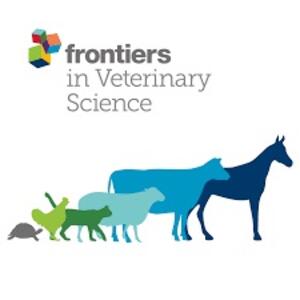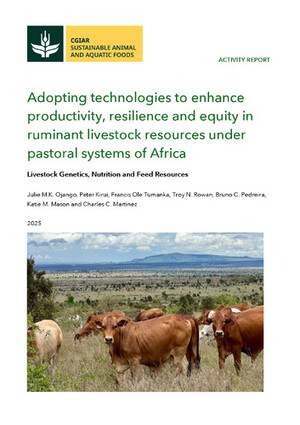

Farmer-to-farmer approach offers solutions to improve the efficiency of agricultural extension services in Kenya
Agricultural extension services in Kenya play a crucial role in boosting farm productivity and helping farmers adopt best practices. They provide farmers with vital information, ultimately enabling them to optimize resource use and increase yields.
Despite their potential, agricultural extension services face various challenges, including understaffing, underfunding, limited access for those in remote areas, poor communication skills, and diverse cultures that often reduce their effectiveness. For instance, understaffing can lead to a lack of personalized support for farmers, while poor communication skills can hinder the transfer of knowledge and best practices.

But there is hope. To address these challenges, many have adopted a new approach known as the farmer-to-farmer extension (F2FE) model. F2FE uses a collaborative approach where selected farmers are chosen as catalysts and facilitators to help their community members adopt new knowledge and skills. This model has the potential to overcome the hurdles faced by traditional extension services.
These selected farmers, often referred to as 'lead farmers', are not just individuals within the networks. They are the backbone of the F2FE model; effective influencers within their communities who are well-positioned to transfer information to network members. Their role is crucial, as they act as catalysts and facilitators to help community members make important decisions.
In a recent study, researchers at the International Livestock Research Institute (ILRI) in collaboration with the Global Academy of Agriculture and Food Systems, University of Edinburgh, analysed the information flows within farmer-to-farmer networks to understand how extension strategies can be made more effective in Kenya. The findings show that farmer networks are diverse and have varying levels and types of social capital. This concept impacts how information is shared. As a result, the study also found that training a lead farmer to spread information and awareness of agricultural technologies may not always be effective due to low social capital.
Based on these findings, the study recommends that F2FE programs focus on building a foundation of social capital to enhance the information pathways within networks, ensuring their sustainability and effectiveness. It also recommends that while the farmer-to-farmer extension model may be a low-cost alternative to traditional extension services, policymakers should consider implementing interventions that focus on increasing farmers' social capital base.
In addition, the study highlights that individuals with high levels of bonding social capital are often men. Therefore, this study strongly recommends that F2FE programs actively work to identify interventions that strengthen bonding social capital among female farmers, enabling them to effectively play the lead farmer role. Gender balance is not just a recommendation; it is a necessity for the success of F2FE programs.

The study was conducted in Oyugis, Rongo, Vihiga, Homa Bay, and Siaya counties of the western region of Kenya, which is dominated by smallholder agriculture. Smallholder dairying is an important livelihood strategy, but productivity is low, in part due to low levels of technology and input use. The work sought to compare network structures between sites with different levels of dairy development. The existence and non-existence of farmer co-operatives were used as alternatives to gauge different levels of social capital.
In western Kenya, two main F2FE approaches were being implemented by two development NGOs: Volunteer Farmer Trainers (VFTs) and Village-Based Advisors (VBAs). Both approaches trained several lead farmers and supported them in creating demonstration plots and livestock farms, enabling them to exhibit new agricultural methods and educate their peers. The lead farmers are also encouraged to earn income from selling inputs and services to their peers, which promotes entrepreneurship and makes the project sustainable in the long run. Evidence suggests that these projects have been successful in mobilizing and training farmers, distributing materials, and enhancing technology adoption and productivity.
This study enhances our understanding of how agricultural innovations disseminate through farmer networks and contributes to a broader comprehension of how innovation systems function. It provides greater insight into the role of farmers as agents of change. By leveraging the recommendations given, it is possible to improve the efficiency of extension services to farmers across the country.
This blog is drawn from a study published in The Journal of Agricultural Education and Extension, titled ‘Information flows within farmer networks and the implications for farmer-to-farmer extension: evidence from the Kenyan dairy sector’.
This work was supported through a scholarship to Rosie Morrison by Scotland’s Rural College and the University of Edinburgh’s Global Academy of Agriculture and Food Systems. The work was also supported by the CGIAR Initiative on Sustainable Animal Productivity (SAPLING) and is supported by contributors to the CGIAR Trust Fund.
See more information about extension services here …
You may also like
ILRI News
Four-year initiative launched to improve milk quality, safety and marketing in central and western Kenya

ILRI News
ILRI signs agreements with seven universities to collaborate on practical innovations for Ethiopia’s dairy sector

HABITAT- Farmer workshops on biodiversity and pasture biodiversity assessment on highland dairy farms

ILRI News
The Africa Asia Dairy Genetic Gains project launches mobile app to track dairy animal performance
Related Publications

Prevalence and risk factors for lameness in dairy cattle on selected farms located in Dessie and Kombolcha, Northeast Ethiopia
- Mekonin, H.A.
- Reda, A.A.
- Assen, Alula A.
- Assen, A.M.

Genetic estimates and genome-wide association studies of antibody response in Tanzanian dairy cattle
- Hernandez-Castro, L.E.
- Cook, Elizabeth A.J.
- Matika, O.
- Mengele, I.J.
- Motto, S.K.
- Bwatota, S.F.
- Zirra-Shallangwa, B.
- Pong-Wong, R.
- Prendergast, J.
- Mrode, Raphael A.
- Toye, Philip G.
- Komwihangilo, D.M.
- Lyatuu, E.
- Karani, Benedict E.
- Nangekhe, Gertrude
- Okeyo Mwai, Ally
- Shirima, G.M.
- Bronsvoort, B.M. de C.

Training of dairy farmers and extension workers on performance recording in Ethiopia
- Meseret, Selam
- Jufar, B.
- Dagnew, M.
- Damtie, M.
- Hassen, Messay

Defatted black soldier fly larvae meal as a substitute of soybean meal in dairy cow diets
- Braamhaar, D.J.M.
- Pellikaan, W.F.
- List, D.
- Korir, Daniel
- Tanga, C.M.
- Oosting, S.J.











